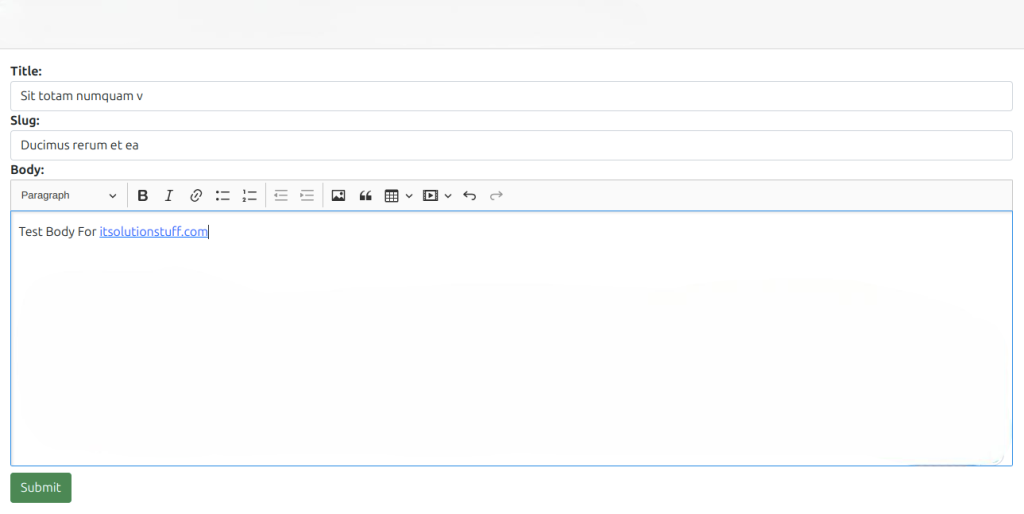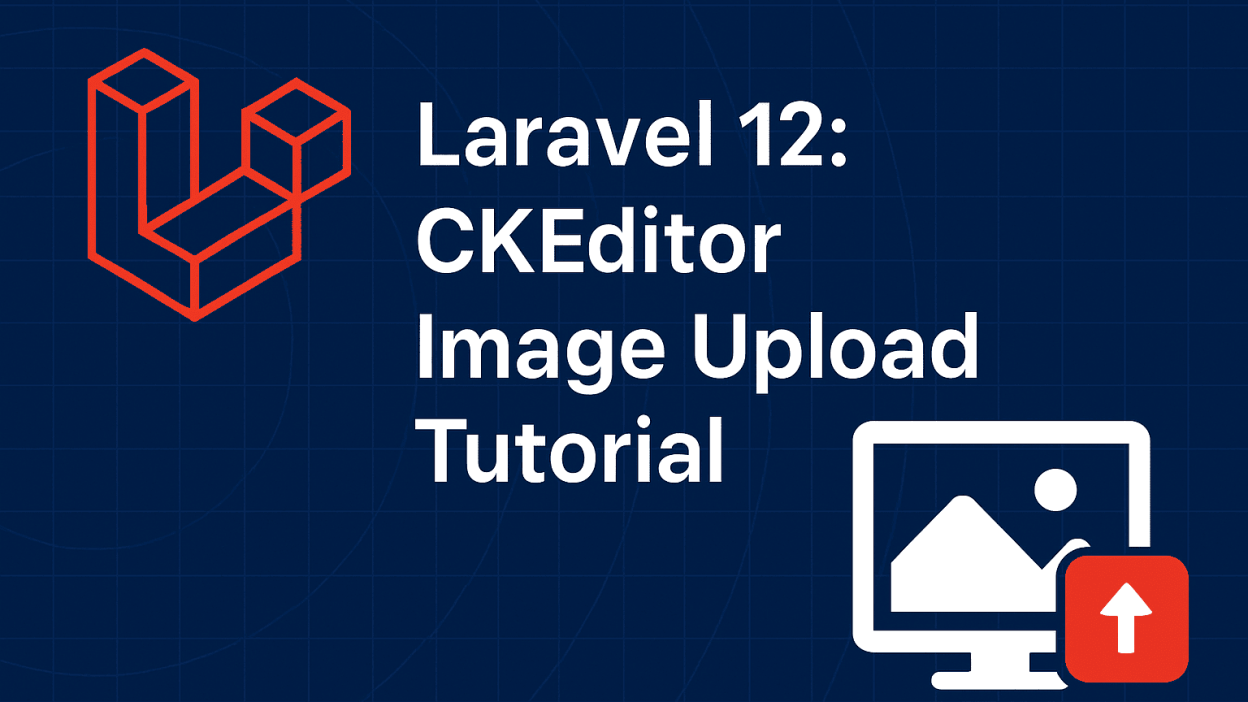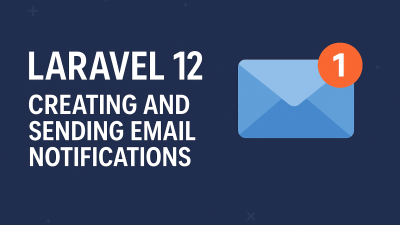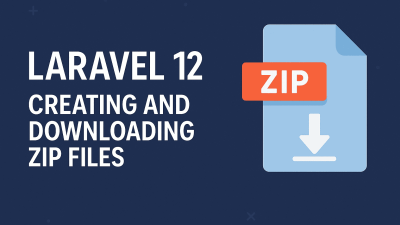In this tutorial, we’ll walk through how to implement image upload functionality in CKEditor within a Laravel 12 application.
What is CKEditor?
CKEditor is a powerful, open-source WYSIWYG (What You See Is What You Get) editor that allows users to create and format rich text content directly in a web browser. It supports features like text styling, media embedding, and HTML editing—without requiring coding knowledge.
Since its release in 2003, CKEditor has become a popular choice for developers due to its flexibility, ease of integration, and extensive customization options.
How to Implement Image Upload in CKEditor with Laravel 12
We’ll create a simple Laravel application where users can:
- Write content using CKEditor.
- Upload images directly into the editor.
- Store uploaded images in the /public/media directory.
Step-by-Step Implementation
Step 1: Install Laravel 12
First, create a new Laravel project:
composer create-project laravel/laravel example-appStep 2: Set Up Routes
Add the following routes in routes/web.php:
<?php
use Illuminate\Support\Facades\Route;
use App\Http\Controllers\CkeditorController;
Route::get('ckeditor', [CkeditorController::class, 'index']);
Route::post('ckeditor/upload', [CkeditorController::class, 'upload'])->name('ckeditor.upload');Step 3: Create a Controller
Generate a controller to handle CKEditor image uploads:
php artisan make:controller CkeditorControllerUpdate app/Http/Controllers/CkeditorController.php:
<?php
namespace App\Http\Controllers;
use Illuminate\Http\Request;
use Illuminate\View\View;
use Illuminate\Http\JsonResponse;
class CkeditorController extends Controller
{
/**
* Display the CKEditor form.
*/
public function index(): View
{
return view('ckeditor');
}
/**
* Handle image upload from CKEditor.
*/
public function upload(Request $request): JsonResponse
{
if ($request->hasFile('upload')) {
$originName = $request->file('upload')->getClientOriginalName();
$fileName = pathinfo($originName, PATHINFO_FILENAME);
$extension = $request->file('upload')->getClientOriginalExtension();
$fileName = $fileName . '_' . time() . '.' . $extension;
$request->file('upload')->move(public_path('media'), $fileName);
$url = asset('media/' . $fileName);
return response()->json([
'fileName' => $fileName,
'uploaded' => 1,
'url' => $url
]);
}
}
}Step 4: Create a Blade View
Create a new file resources/views/ckeditor.blade.php:
<!DOCTYPE html>
<html>
<head>
<title>Laravel 12 CKEditor Image Upload</title>
<link href="https://cdn.jsdelivr.net/npm/bootstrap@5.0.2/dist/css/bootstrap.min.css" rel="stylesheet">
<style>
.ck-editor__editable_inline {
min-height: 300px;
}
</style>
</head>
<body>
<div class="container">
<div class="card mt-5">
<h3 class="card-header p-3">CKEditor Image Upload in Laravel 12</h3>
<div class="card-body">
<form>
<div class="form-group mb-3">
<label class="form-label"><strong>Title:</strong></label>
<input type="text" name="title" class="form-control" placeholder="Enter title">
</div>
<div class="form-group mb-3">
<label class="form-label"><strong>Body:</strong></label>
<textarea name="editor" id="editor"></textarea>
</div>
<div class="form-group">
<button class="btn btn-success" type="submit">Submit</button>
</div>
</form>
</div>
</div>
</div>
<script src="https://cdn.ckeditor.com/ckeditor5/34.2.0/classic/ckeditor.js"></script>
<script>
ClassicEditor
.create(document.querySelector('#editor'), {
ckfinder: {
uploadUrl: '{{ route('ckeditor.upload') }}?_token={{ csrf_token() }}',
}
})
.catch(error => {
console.error(error);
});
</script>
</body>
</html>Step 5: Run the Application
Start the Laravel development server:
php artisan serveVisit the application in your browser:
http://localhost:8000/ckeditor



